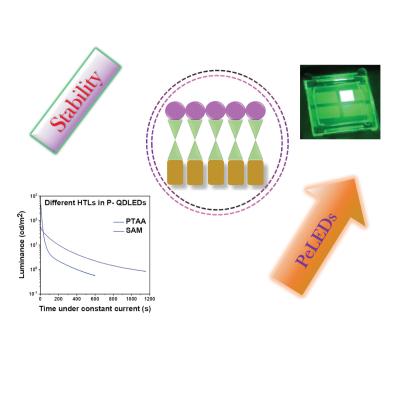Researchers from the Institute of Chemical Research of Catalonia-The Barcelona Institute of Science and Technology (ICIQ-BIST), Centre Tecnològic de Catalunya EURECAT, Istituto Italiano di Tecnologia (IIT), ICREA and Universitat Rovira i Virgili have reported the application of two carbazole-based self-assembled molecules (SAMs) as hole injecting materials in perovskite-based LEDs.
Their structures differ in one phenyl ring in the bridge; however, the extra ring provides more stability to the devices, even surpassing the one obtained with the widely used polymer PTAA. In addition, due to the structural and electronic characteristics of the SAMs, the efficiency of the devices is also increased.
Dr. Martínez-Ferrero lead a collaboration with the group of Prof. Liberato Manna to demonstrate the ability of SAMs to improve the power conversion efficiency and increase the device stability compared to conventional organic hole transport layers.
SAMs are organic moieties that act as hole transport materials (HTM) to improve charge injection and the stability of LEDs. In this study, two carbazole-based self-assembled molecules: EADR03 (4-(3,6-bis(2,4-dimethoxyphenyl)-9H-carbazol-9-yl) benzoic acid) and EADR04 (4’-(3,6-bis(2,4-dimethoxyphenyl)-9H-carbazol-9-yl)-[1,1’-biphenyl]-4-carboxylic acid) have been explored. The fine tuning of the SAMs structure contributes to improve the lifetime of these promising LEDs.
This is one of the first examples where SAMs have been applied as selective contacts in PeLEDs.
The substitution of conventional polymers used as HTM by SAMs simplifies the device architecture, avoids interlayer mixing and lowers the cost of the materials and of the final device because the amount of material is reduced.
The team's next goal is to optimize the type of self-assembled molecules in order to achieve better efficiencies.




